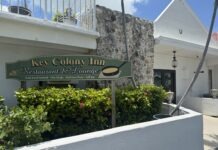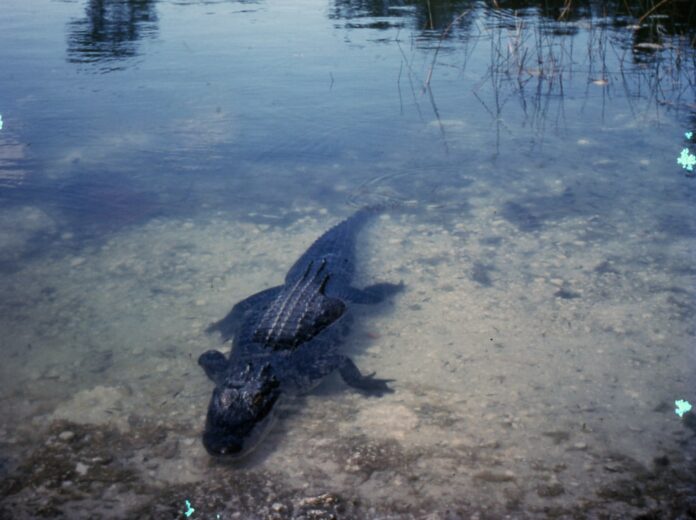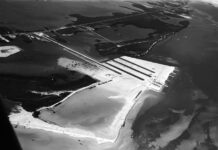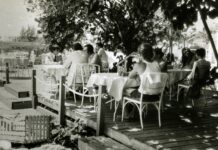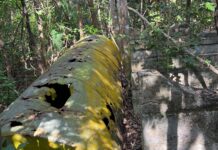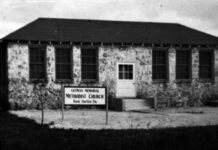One of my favorite things about driving across Florida’s peninsula, traveling between the Keys and the west coast (preferably to Sanibel or Captiva islands), is spotting alligators.
Whether crossing via Alligator Alley or Highway 41, both conduits provide ample opportunities to see the reptiles sunning on a bank or swimming slowly through the roadside water. Those two roads are not the only places I look for alligators. There is another asphalt artery from which the toothy reptiles can be occasionally observed that is much closer to home. While making the drive between the Last Chance Saloon and the Jewfish Creek Bridge, once in a while, I spot a familiar, knobby blackish back in the wetlands.
Remember, just last summer, a 10-foot alligator made national headlines after it wandered onto the 18-Mile Stretch of the highway like a roadblock. Traffic was stalled for over an hour while the reptile was captured and relocated.
While the presence of crocodiles has become more pervasive along the island chain, did you know that alligators are native to the Florida Keys, too?
It is no big secret that alligators are routinely seen at the Blue Hole on Big Pine Key. The Blue Hole was created in the 1920s during the building of State Road 4A, the earliest version of the Overseas Highway. Limestone was quarried from that location for construction projects, and what was left in the wake of those efforts was an open quarry that breached the underlying aquifer, filled with water, and is now known as the Blue Hole. Today, there is a wildlife observation platform at the water’s edge from which an alligator or two can usually be seen.
There has been debate about how the alligators that call the Blue Hole home arrived. Some say that they were dumped there years ago. After all, while crocodiles live in brackish and saltwater environments, alligators require freshwater, and there is not enough of it to support a natural alligator population in the Florida Keys — except at the Blue Hole, right?
The people making that argument are mistaken. As it turns out, alligators were in the Florida Keys long before the Blue Hole was carved into existence. According to a study by Terri Jacobsen, not only does the historical record reveal alligators living in the Keys, but they were also found well beyond the Blue Hole.
Jacobsen’s study was conducted between May 1979 and November 1981. Published in 1983, it appeared in the Florida Field Naturalist. Among the other notes included in the report was this: “The indigenous range of Alligator mississippiensis is from coastal N. Carolina south to Southern Florida and the Keys, and westward through the Deep South to central Texas and extreme southeastern Oklahoma (Martof, 1956).”
One of the best things that alligators do is create alligator holes. They use their snouts and feet to clear the leaf litter and other debris from depressions and sinkholes in an effort to make small, shallow watering holes bigger and deeper. The intent is to create a freshwater hole deep enough for them to call home. It also attracts birds, reptiles and mammals looking for a drink.
Ambush predators, these thirsty creatures serve as a food source for the sneaky reptiles.
According to Jacobsen’s fieldwork, evidence of this behavior was noted on more than one occasion in the Florida Keys. Sometimes, these alligator holes grow large enough to become a habitat for fish, amphibians and other reptiles, like terrapins. Sometimes, too, gator holes create reliable sources of freshwater during the dry season.
During her study, 133 alligators were identified in the Lower Keys — 46 of those reptiles were juveniles or hatchlings. Jacobsen said, “… man-made inland canals, vestiges of abandoned development, and borrow pits used for fill construction provide year-round deep-water habitats of low salinity. The severity of the season conditions is partially alleviated by a system of ditches, constructed in 1965 as part of the Anti-mosquito Control Program. These inland freshwater mosquito ditches are used frequently by small alligators, although I observed alligators of various sizes in ditched areas.”
In her study, Jacobsen also noted a 1937 sighting on Key West where three alligators were captured “in salt water.”
And then there is this story printed in the June 13, 1928 edition of the Key West Citizen.
“An alligator measuring six feet and one inch in length was killed yesterday on Big Pine Key by Everett Rivas, highway traffic officer. Five more were seen but got away. Leo Bowers and Richard Russell witnessed the slaughter of the big amphibian. Mr. Rivas is having the hide dressed to be made into gun holsters. A large number of gators are being reported as seen on Big Pine and No Name, many of them said to be found in salt water, which is claimed by authorities to be contrary to their nature.”
While alligators prefer freshwater pools to call home, it appears there is enough of it in the Keys beyond the Blue Hole to support a small population of alligators, still. One of the things that makes the presence of alligators and crocodiles in South Florida and the Keys special is that it is the only place in the world where the two creatures co-exist.




